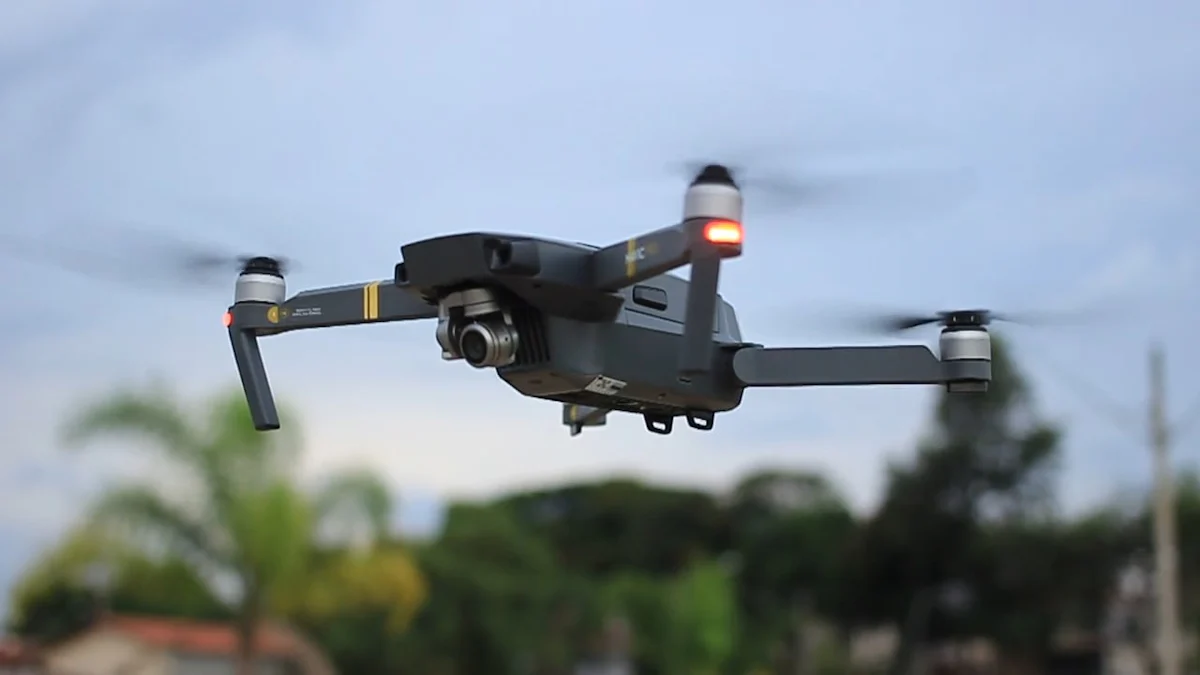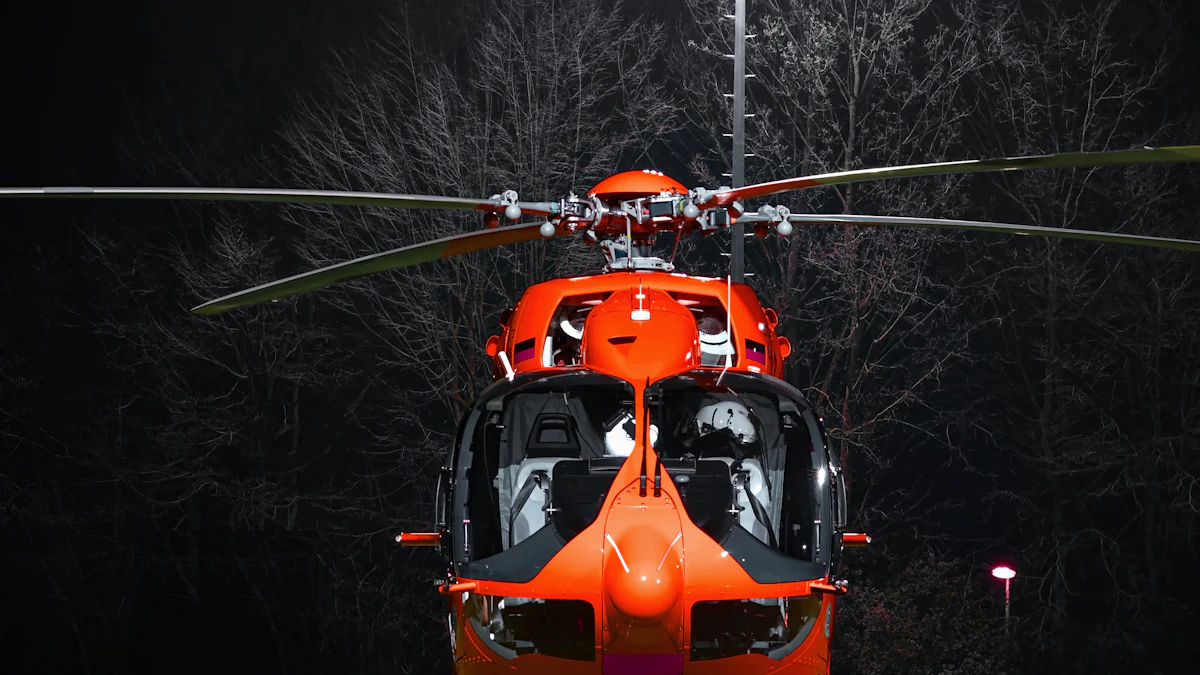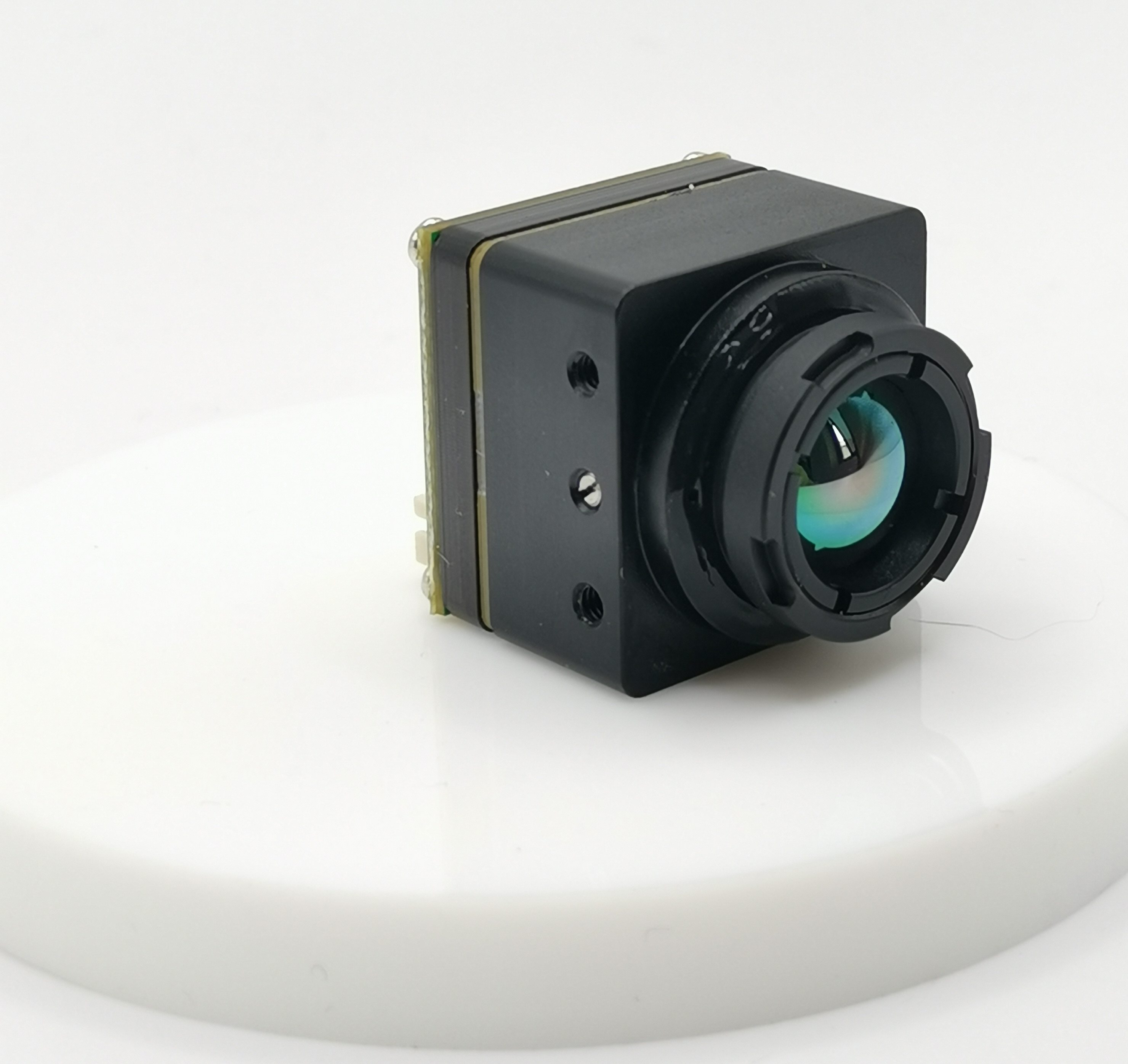6 Ways FPV Thermal Cameras Revolutionize Drone Inspections

FPV Thermal Cameras have transformed the landscape of drone technology by seamlessly integrating thermal imaging capabilities into commercial drones. This innovation has significantly elevated the efficiency and precision of drone inspections. In this blog, we will delve into six key ways in which FPV Thermal Cameras are reshaping the field of drone inspections, from enhanced surveillance to environmental monitoring. These cameras offer a cutting-edge solution for industries seeking advanced thermal imaging functionalities.
Enhanced Surveillance
In the realm of drone technology, enhanced surveillance capabilities have been a game-changer with the integration of FPV Thermal Cameras. These advanced cameras not only provide thermal imaging functionalities but also offer a heightened level of precision in detecting anomalies. Let's explore two key aspects that highlight the significance of FPV Thermal Cameras in revolutionizing surveillance.
Better Heat Detection
Understanding how FPV Thermal Cameras detect heat signatures is crucial for grasping their surveillance potential. These cameras operate based on the principle of thermal radiation, where objects emit infrared radiation corresponding to their temperature. By capturing this radiation, FPV Thermal Cameras convert it into visible images, allowing operators to identify temperature variations effectively.
The benefits of utilizing FPV Thermal Cameras for surveillance span across various industries. For instance, in agriculture, these cameras aid in monitoring crop health by detecting temperature fluctuations that may indicate stress or disease. Similarly, in wildlife conservation efforts, FPV Thermal Cameras help track animal movements and behavior patterns based on their thermal signatures.
FPV System Integration
The integration of FPV Systems further enhances surveillance capabilities by providing real-time thermal imaging data to drone operators. One notable system is the DJI air unit, which seamlessly integrates with drones to deliver high-quality thermal footage for surveillance purposes. Additionally, the DJI FPV system offers advanced features like object tracking and temperature measurement, enhancing situational awareness during operations.
A standout player in this integration is the Caddx Nebula Pro Digital, known for its exceptional performance in delivering clear and detailed thermal images. This digital system elevates surveillance tasks by offering precise thermal data analysis and seamless compatibility with various drone models.
By combining cutting-edge technology with innovative design, FPV Thermal Cameras integrated into drones are reshaping the landscape of surveillance practices across industries.
Improved Inspections
In the realm of drone inspections, the utilization of FPV Thermal Cameras has revolutionized the way infrastructure monitoring is conducted. These advanced cameras provide a unique perspective by capturing thermal images from an aerial viewpoint, offering unparalleled insights into the condition of critical infrastructure elements. Let's delve into how FPV Thermal Cameras are enhancing inspections and preventing potential failures.
Infrastructure Monitoring
When it comes to inspecting power lines, pipelines, and buildings, FPV Thermal Cameras play a pivotal role in ensuring structural integrity and operational efficiency. By leveraging thermal imaging technology, operators can detect temperature variations that may indicate underlying issues such as overheating or leaks. This proactive approach allows for timely maintenance interventions to prevent costly failures and downtime.
To illustrate, in the energy sector, drones equipped with thermal cameras are deployed to monitor power lines for hotspots caused by excessive electrical resistance. By identifying these anomalies early on, utility companies can address potential faults before they escalate into serious outages. Similarly, in pipeline inspections, thermal imaging helps detect leaks by visualizing temperature differences along the pipeline route.
Moreover, in building inspections, FPV Thermal Cameras aid in identifying insulation deficiencies or water ingress points through thermal anomalies. By conducting regular aerial surveys using these cameras, facility managers can prioritize maintenance tasks based on real-time data insights. This proactive maintenance strategy not only extends the lifespan of buildings but also enhances overall safety standards.
Drone Quadcopter Caddx Nebula
The integration of FPV Drone Quadcopter Caddx with thermal cameras represents a significant advancement in drone technology for inspections. These specialized quadcopters offer enhanced maneuverability and stability during aerial surveys, allowing operators to navigate complex environments with precision. Let's explore how the integration of Caddx Nebula Pro Digital elevates inspection capabilities.
By incorporating Caddx Nebula Pro Digital into drone quadcopters, inspectors gain access to high-resolution thermal imaging that provides detailed insights into structural conditions. The seamless compatibility of this digital system with drone models ensures smooth operation and accurate data collection during inspections. Moreover, the lightweight design of Caddx Nebula Pro Digital minimizes payload constraints, enabling extended flight times for comprehensive surveys.
In practical terms, utilizing FPV Drone Quadcopter Caddx enhances inspection efficiency by reducing manual labor requirements and increasing survey coverage areas. The real-time transmission of thermal data to ground stations enables instant analysis and decision-making for maintenance actions. As a result, industries ranging from construction to environmental management benefit from streamlined inspection processes that prioritize safety and reliability.
Through the strategic integration of cutting-edge technologies like FPV Thermal Cameras with drone quadcopters equipped with Caddx Nebula Pro Digital systems, inspections reach new heights of accuracy and effectiveness across diverse sectors.
Search and Rescue

In the realm of search and rescue missions, FPV Thermal Cameras emerge as indispensable tools, aiding teams in locating individuals swiftly and effectively. The utilization of these advanced cameras revolutionizes traditional search methods by providing a unique vantage point from above. Let's delve into how FPV Thermal Cameras play a pivotal role in enhancing search and rescue operations.
Locating Heat Signatures
FPV Thermal Cameras serve as the eyes in the sky for search and rescue teams, offering unparalleled capabilities in detecting heat signatures. By capturing thermal images with precision, these cameras enable operators to identify individuals even in challenging environments or low-light conditions. The ability to distinguish temperature variations allows rescuers to pinpoint the exact location of missing persons swiftly.
One interviewee, a seasoned member of a search and rescue team, emphasized the critical role of drones equipped with thermal cameras during a recent mission. Collaborating with local police and fire department personnel, the team deployed a drone with a thermal camera to locate a missing man in dense forest terrain. The thermal imaging data provided real-time insights into heat signatures, guiding rescuers to the individual's precise location within minutes.
Moreover, successful rescues using FPV Thermal Cameras have been documented across various scenarios, from wilderness searches to urban emergencies. In one instance, emergency responders utilized a drone fitted with a thermal camera to locate an injured hiker stranded on a remote mountain trail at night. The thermal imaging technology facilitated a swift and safe extraction operation, demonstrating the life-saving potential of these advanced tools.
Pro Digital System BNF
The Pro Digital System BNF stands out as an innovative solution that enhances the efficiency and effectiveness of search and rescue operations conducted using drones. This system integrates seamlessly with drones equipped with thermal cameras, offering advanced features for optimal performance in demanding environments. Let's explore how the Pro Digital System BNF elevates search and rescue missions.
During an interview with rescue specialists, insights were shared regarding the advantages of utilizing the Pro Digital System BNF for aerial operations. The system's compatibility with leading drone models ensures reliable data transmission and high-quality thermal imaging capabilities during critical missions. By leveraging this system, search and rescue teams can enhance their situational awareness and response times significantly.
The advantages of using the Pro Digital System BNF extend beyond its technical specifications to include operational benefits such as rapid deployment and intuitive controls. Its robust design withstands challenging weather conditions and rough terrains, making it an ideal companion for emergency response teams operating in diverse settings. Furthermore, the system's real-time data processing capabilities enable quick decision-making during dynamic situations, ensuring efficient coordination among team members.
Environmental Monitoring

In the realm of environmental monitoring, FPV Thermal Cameras play a pivotal role in tracking wildlife and conducting comprehensive surveys to assess ecosystem health. The integration of thermal imaging technology into drones has revolutionized the way researchers and conservationists gather data on animal populations and habitat conditions. Let's explore how FPV Thermal Cameras are transforming environmental monitoring practices.
Wildlife Tracking
Monitoring wildlife is essential for understanding biodiversity patterns, species behavior, and ecosystem dynamics. FPV Thermal Cameras offer a non-intrusive method to observe animals in their natural habitats without causing disturbances. By capturing thermal images from aerial perspectives, researchers can track elusive species and study their movements with precision.
One notable study titled "Drone with Mounted Thermal Infrared Cameras for Monitoring Terrestrial Mammals" published in the journal Drones showcases the effectiveness of using drones equipped with thermal cameras for wildlife recognition. The research focused on identifying wild mammal species, such as red deer and roe deer, in a moor area in Denmark. The thermal images captured by the drone provided distinct body measures for species recognition and population studies, highlighting the potential of FPV Thermal Cameras in wildlife tracking.
Moreover, environmental surveys conducted with FPV Thermal Cameras have yielded valuable insights into habitat quality, animal distribution, and ecological interactions. Conservation organizations leverage these cameras to monitor endangered species, assess habitat fragmentation, and detect illegal poaching activities. By combining thermal imaging technology with drone capabilities, researchers can conduct large-scale surveys efficiently and contribute to conservation efforts effectively.
Nebula Pro Digital System
The Nebula Pro Digital System represents a cutting-edge solution for enhancing environmental monitoring tasks using FPV technology. This advanced system integrates seamlessly with drones equipped with thermal cameras to provide real-time video transmission and data analysis capabilities. The benefits of utilizing the Nebula Pro Digital System extend beyond traditional surveillance applications to include environmental research and conservation initiatives.
By explaining how the Nebula Pro Digital System aids in environmental monitoring tasks, researchers gain insights into its role in capturing high-quality thermal footage for ecological studies. The system's compatibility with various drone models ensures flexibility in deployment across diverse ecosystems, from dense forests to open savannas.
The key advantages of using the Nebula Pro Digital System lie in its ability to enhance situational awareness during wildlife surveys by offering clear video feeds and precise temperature measurements. Researchers can analyze thermal data to identify animal hotspots, nesting sites, or migration routes effectively. Additionally, the lightweight design of the system ensures minimal interference with drone operations while maximizing flight endurance for prolonged monitoring missions.
Law Enforcement
In the realm of law enforcement, the adoption of FPV Thermal Cameras has redefined surveillance practices and evidence collection procedures. These advanced cameras serve as indispensable tools for enhancing operational efficiency and ensuring public safety. Let's explore how FPV Thermal Cameras are revolutionizing law enforcement operations.
Surveillance and Evidence Collection
The role of FPV Thermal Cameras in law enforcement is multifaceted, encompassing a wide range of applications that improve situational awareness and investigative capabilities. These cameras provide law enforcement agencies with a unique perspective by capturing thermal images that reveal hidden details not visible to the naked eye. By leveraging thermal imaging technology, officers can track suspects, monitor criminal activities, and gather crucial evidence for legal proceedings.
One significant advantage of using FPV Thermal Cameras in surveillance is their ability to operate effectively in various lighting conditions, including low light or complete darkness. This feature enables law enforcement personnel to conduct covert operations without alerting suspects, enhancing the element of surprise during critical missions. Additionally, the real-time transmission of thermal data to command centers allows for immediate decision-making and swift response actions.
In practice, law enforcement agencies across the globe have integrated FPV Thermal Cameras into their operations to combat crime more effectively. For instance, during a recent drug trafficking investigation in a remote area, officers deployed drones equipped with thermal cameras to track suspect movements without compromising officer safety. The thermal imaging data captured by the drones provided actionable intelligence that led to successful arrests and seizure of illicit substances.
Furthermore, when it comes to evidence collection, FPV Thermal Cameras play a pivotal role in documenting crime scenes with precision. By capturing detailed thermal images of forensic evidence such as footprints or discarded items, investigators can reconstruct events accurately and establish timelines for criminal investigations. The high-resolution imagery produced by these cameras serves as valuable visual documentation that strengthens legal proceedings and ensures justice is served.
Commercial Drone with Thermal Camera: FPV Thermal Camera, ISUN Analog FPV Thermal Camera
The utilization of commercial drones equipped with thermal cameras represents a significant advancement in law enforcement tactics aimed at improving operational outcomes. These specialized drones offer unparalleled aerial surveillance capabilities that enhance response times and overall mission success rates. Let's delve into the importance and advantages of utilizing commercial drones with thermal cameras in law enforcement scenarios.
The integration of FPV Thermal Cameras into commercial drones significantly enhances surveillance coverage areas while minimizing manual intervention requirements for officers on the ground. By deploying drones equipped with thermal cameras during search operations or suspect pursuits, law enforcement agencies can track targets from above with precision and agility. This aerial vantage point provides a strategic advantage in monitoring large areas efficiently while maintaining a discreet presence.
Moreover, the use of ISUN Analog FPV Thermal Cameras offers law enforcement teams enhanced image clarity and temperature sensitivity crucial for identifying suspects or locating hidden objects during investigations. The analog technology ensures reliable performance under challenging environmental conditions such as extreme temperatures or inclement weather. This durability factor makes ISUN Analog FPV Thermal Cameras ideal for prolonged surveillance missions where consistent data quality is paramount.
By incorporating cutting-edge technologies like FPV Thermal Cameras into commercial drones equipped with ISUN Analog systems, law enforcement agencies elevate their operational effectiveness and response capabilities significantly.
Conclusion
Summary of Benefits
Thermal drone cameras have revolutionized the field of drone inspections by offering unparalleled flexibility and reach, providing valuable thermal data across various sectors. From enhanced surveillance to improved inspections and search and rescue missions, these advanced cameras play a pivotal role in enhancing safety, efficiency, and decision-making processes in industries such as agriculture, firefighting, and law enforcement.
The transformative impact of FPV Thermal Cameras on drone inspections is evident in their ability to detect objects, monitor environmental changes, and enhance security measures effectively. By equipping drones with thermal imaging systems, operators can access real-time thermal data that enables proactive decision-making and preventive actions. The integration of thermal technology has elevated the standard practices of surveillance and inspection techniques to new heights of accuracy and reliability.
Future Prospects
As technology continues to advance rapidly, the future prospects for FPV Thermal Camera technology are promising. Potential developments may include enhanced resolution capabilities for sharper thermal imaging, extended range for broader coverage areas, and improved thermal sensitivity for detecting subtle temperature variations. Staying updated with these technological advancements is crucial for industries relying on drone inspections to maintain a competitive edge in the market.
Embracing innovation in thermal drone technology opens doors to new possibilities in monitoring wildlife habitats, conducting environmental surveys, and supporting emergency response operations. By harnessing the power of thermal cameras integrated into drones, businesses and organizations can streamline their operations, reduce risks, and optimize resource allocation effectively. Looking ahead, the evolution of FPV Thermal Cameras will continue to shape the future of drone inspections by offering cutting-edge solutions that redefine industry standards.
In conclusion, the integration of FPV Thermal Cameras into drone technology has undeniably revolutionized the landscape of drone inspections. These advanced cameras offer unparalleled flexibility and reach, providing valuable thermal data across various sectors. From enhanced surveillance to improved inspections and search and rescue missions, FPV Thermal Cameras have become indispensable tools in enhancing safety, efficiency, and decision-making processes.
Looking ahead, the future of drone technology holds promising prospects for further advancements in thermal imaging capabilities. Innovations such as Zenmuse H20T with high-resolution sensors or FLIR VUE TV128 offering precision thermal analysis are set to redefine industry standards. Embracing these technological developments will not only optimize resource allocation but also streamline operations effectively, ensuring that businesses stay ahead in a competitive market driven by innovation.
See Also
Maximizing Drone Efficiency with FPV Thermal Cameras in Tough Conditions
Enhancing Drone Visibility Through FPV Thermal Camera Surveillance
Transforming Drone Tech: The Analog FPV Thermal Camera Advantage
Innovative Field Monitoring: Thermal Camera for FPV Drone Operations
Discovering the Advantages of Analog FPV Thermal Cameras for Drones
Contact Us: Ms. Coco Huang
E-mail: sales@iasun.cn
WhatsApp/Wechat: +86 13510421923

